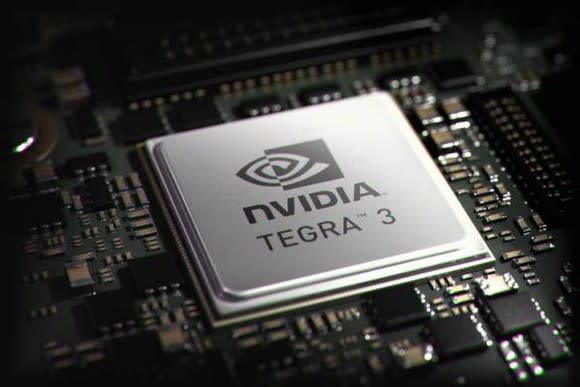Why NVIDIA Corp. Will Design a Fully Custom Chip for the Next Nintendo Switch
About a year ago, gaming icon Nintendo (NASDAQOTH: NTDOY) released its latest home console, the Nintendo Switch. The Switch, which followed Nintendo's disappointing Wii-U, has proven to be a smash hit. One beneficiary of Nintendo's success has been NVIDIA (NASDAQ: NVDA), which provides the chip that handles the key processing tasks inside of the device.
Although the chip inside of the current Nintendo Switch was touted as being a "custom" design, tear-down reports revealed that it is little more than NVIDIA's off-the-shelf Tegra X1 chip that launched in the second quarter of 2015.

Image source: NVIDIA.
Going forward, though, I believe that NVIDIA will build truly custom processors for Nintendo's future Switch game consoles (if NVIDIA is indeed contracted to provide the chips for those consoles).
Here's why.
NVIDIA's new Tegra focus
The Tegra X1 was one of the last Tegra processors that NVIDIA released that was intended to be used in low-power mobile devices like tablets. This made the Tegra X1 a solid choice for the Switch, which is very similar to a high-end tablet computer in terms of performance requirements and power consumption.
After the Tegra X1, though, NVIDIA's Tegra processor designs have become decidedly less mobile-focused and more automotive-focused. NVIDIA's most recently announced Tegra processor, which is code-named Xavier, is designed to consume 30 watts of power -- twice that of the prior-generation Parker chip (which consumed roughly the same amount of power as the Tegra X1).
That increased power consumption isn't due to any failing on NVIDIA's part with the Xavier design -- it's due to NVIDIA cramming the chip with more horsepower than it would've otherwise been able to if the chip were targeted at lower-power applications.
Since NVIDIA's mainstream Tegra processors are targeted at the automotive market (where power efficiency is still important but the total power consumed by the chips can be higher), I think NVIDIA will need something different for a future Nintendo Switch.
Same building blocks, different proportions
The good news for both Nintendo and NVIDIA is that a custom processor for a future Nintendo Switch would still likely be built from many of the same building blocks that are used to craft the automotive-focused Tegra processors. These building blocks would simply be used in different proportions.
For example, Xavier has eight of NVIDIA's custom-designed processor cores known as "Carmel." For a mobile gaming device, it probably doesn't make sense to have eight high-powered processor cores (since games likely couldn't use all eight of them without burning through too much power). So, a Nintendo-specific Tegra processor could, instead, use four of those Carmel cores. It could even use mobile-oriented cores licensed from ARM, which might not be as powerful as NVIDIA's cores but could be much more efficient and deliver the requisite performance.
NVIDIA could also cut out any hardware inside of the chip that's not relevant to gaming/multimedia performance (like the dedicated computer vision engine that's embedded in the chip to support self-driving car applications) to save on both power and cost. NVIDIA could even use the power/space savings that result from cutting the proverbial fat to beefing up things that matter to gaming (for example, adding more graphics processor cores).
Given NVIDIA's strong portfolio of intellectual property, significant financial incentive from the success of the Nintendo Switch, as well as its increasingly capable system-on-a-chip integration capabilities, I fully expect Nintendo's next Switch to incorporate a truly custom processor developed in collaboration with NVIDIA.
More From The Motley Fool
Ashraf Eassa has no position in any of the stocks mentioned. The Motley Fool owns shares of and recommends Nvidia. The Motley Fool has a disclosure policy.
